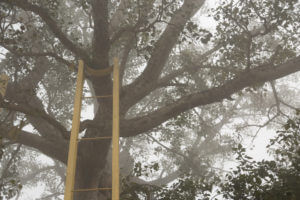Originally published in 2014
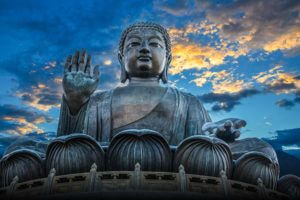
What I propose is a spiritual revolution.
—His Holiness the Dalai Lama
The State of Black America
In his 1970 work, Buddhist Ethics, Hammalawa Saddhatissa writes in the preface, “Strictly speaking, Buddhism is not a religion in the generally accepted sense of the word, and it would be more accurate to describe it as an ethico-philosophy to be practiced by each follower. And it is only by practice, by an uphill spiritual struggle, that happiness in life either present or future, as well as the goal of Nibbāna, can possibly be attained.” For this conference, I was asked to discuss some of the implications of this ethical philosophy for black America, and also ways it might relate to the civil rights movement. These issues are matters that I’ve spent a lifetime thinking about, but for me this is not merely an academic discussion. Rather, I see it as a matter of life and death for black Americans. Let me try to explain what I mean by that.
Like the narrator of Charles Dickens’s novel A Tale of Two Cities, many black Americans today possibly feel “It was the best of times, it was the worst of times.” The reason is because, as Eugene Robinson explained in an April 4, 2008, article in the Washington Post, there are actually two very culturally different black Americas as this new millennium begins.
In one profile, black Americans appear in every walk of life and profession. They are millionaires, even billionaires, having earned their wealth in business, sports, and entertainment. (Beyonce Knowles last December gave her husband, Jay-Z, whose fortune is worth $450 million, the most expensive car in the world, a Bugatti Veyron Grand Sport priced at $2 million; a month later Oprah Winfrey premiered her own network, appropriately named OWN; and Kanye West just spent $180,000 for a watch in his own image, which is only slightly less than the $250,000 that rapper Usher paid a New York luxury watch company to create a timepiece with his face on it.) But in a different, grim, and depressing portrait, 25 percent of black Americans live in poverty. That percentage in 2011 may become even higher after what we call the Great Recession, which pushed members of the fragile black middle class into the ranks of the poor. 71 percent of black babies are born out of wedlock and over half of black children (56 percent) are fatherless. In America’s prisons, where on average the 2.25 million persons incarcerated in 2006 had fewer than eleven years of schooling, about half are black. One in nine black men between the ages of twenty and thirty-four is in prison. While black people represented 13 percent of the US population in 2005, they were the victims of 49 percent of all murders, 15 percent of rapes, assaults, and other violent crimes nationwide, and most of the black murder victims—93 percent—were killed by other black people. In 2008, the black male high school graduation rate in Baltimore, Maryland, dropped to 25 percent, was 50 percent in Chicago, and in California ten thousand black students (42 percent) quit school. And to these dire figures we must add the fact that nearly six hundred thousand blacks have the AIDS virus, with their rate of death two and a half times that of whites who have been infected.
A report published last November [2009] by the Council of the Great City Schools, entitled “A Call for Change,” states that “the nation’s young black males are in a state of crisis” and describes their condition as “a national catastrophe.” This report shows that
black boys on average fall behind from their earliest years. Black mothers have a higher infant mortality rate and black children are twice as likely as whites to live in a home where no parent has a job. In high school, African-American boys drop out at nearly twice the rate of white boys, and their SAT scores are on average 104 points lower. In college, black men represented just 5 percent of students in 2008.
Commenting on this situation, Ronald Ferguson, director of the Achievement Gap Initiative at Harvard, said, “There’s accumulating evidence that there are racial differences in what kids experience before the first day of kindergarten. They have to do with a lot of sociological and historical forces. In order to address those, we have to be able to have conversations that people are unwilling to have.”
The Quest for Identity and Liberty
The “sociological and historical forces” Ferguson refers to were also identified as the origin of this contemporary problem a few years ago by Adjoa Aiyetoro, then director of the National Conference of Black Lawyers, who said, “One of the issues we deal with every day is the vestiges of our enslavement, and our post-enslavement in this country has been such that it has beat us down as a people in so many ways.” If there was an essence or eidos for black life during slavery and the seventy years of racial segregation that followed it, that invariant meaning would have to be craving, and the quest for identity and liberty.
CULTURAL CHANGE COMES HARD AND TAKES A LONG TIME, BUT NOTHING SHORT OF PROFOUND CULTURAL CHANGE IS ESSENTIAL.
Legal segregation ended a little less than fifty years ago, within living memory for some of us. And today, the syndicated columnist Bob Herbert, writing about the dismal education report published in November, described this current situation in the post–civil rights period as a “raging fire that is consuming the life prospects of so many young blacks.” “Cultural change comes hard,” he said, “and takes a long time, but nothing short of profound cultural change is essential.” This feeling that a new way of thinking is necessary was expressed even earlier by one of the icons of the civil rights movement, John Lewis. “If King could speak to us today,” Congressman Lewis said in 1994,
he would say, in addition to doing something about guns, he would say there needs to be a revolution of values, a revolution of ideas in the black community. He would say we need to accept nonviolence not simply as a technique or as a means to bring about social justice, but we need to make it a way of life, a way of living.
So this is an old problem, one I’ve witnessed my entire life; and, like John Lewis, I’m old enough to remember Dr. Martin Luther King’s concern with the interplay between the personal and the political. “We must work on two fronts,” he said. “On the one hand we must continually resist the system of segregation—the system which is the basic cause of our lagging standards; on the other hand, we must work constructively to improve the lagging standards which are the effects of segregation. There must be a rhythm of alteration between attacking the cause and healing the effects.”
THERE MUST BE A RHYTHM OF ALTERATION BETWEEN ATTACKING THE CAUSE AND HEALING THE EFFECTS.
And in his sermon “Rediscovering Lost Values,” delivered on February 28, 1954, at Detroit’s Second Baptist Church, King railed against “relativistic ethics,” “pragmatism” applied to questions of right and wrong, and the “prevailing attitude in our culture,” which he described as “survival of the slickest.” King knew that we have a “culture” for young black males that catches them up in gangs, despair, fatherlessness, drugs, prison, anti-intellectualism, and antisocial behavior by the time they are eight years old.
IF WE WANT YOUNG, BLACK AMERICAN MALES TO NO LONGER BE “AN ENDANGERED SPECIES"... THE TWENTY-SIX-HUNDRED-YEAR-OLD DHARMA OF BUDDHISM MUST BE PART OF THAT CONVERSATION.
We have created obstacles, traps, and racial minefields for young black men, and long demonized them as violent, criminal, stupid, lazy, and irresponsible. This conversation that “people are unwilling to have” is obviously one that we must begin if we want young, black American males to no longer be “an endangered species,” as some people have described them, and if we want them to survive in the highly competitive, global, knowledge-driven economies of the twenty-first century. I’m convinced that in terms of what we traditionally call “ethics,” the twenty-six-hundred-year-old Dharma of Buddhism must be part of that conversation.
“Black Dharma”
In 2003, Turning Wheel, the journal of socially engaged Buddhism, devoted a special issue to “Black Dharma.” In that issue, Rebecca Walker, the daughter of the writer Alice Walker and a well-known Buddhist writer herself, interviewed the Vajrayana teacher Choyin Rangdröl. Last year, Rebecca informed me that she and Lama Rangdröl, whom she met at the first black American Buddhist retreat in 2002 at Spirit Rock in Woodacre, California, are now married. During that interview, she asked him, “What led to your decision to bring the Dharma to African Americans?” He replied, “When I discovered that it was possible to avoid becoming ensnared in the mentality of an angry black man by applying Buddhism, I felt I had found a great treasure not just for me but also for resonance in millions of black people’s minds.”
WHEN I DISCOVERED THAT IT WAS POSSIBLE TO AVOID BECOMING ENSNARED IN THE MENTALITY OF AN ANGRY BLACK MAN BY APPLYING BUDDHISM, I FELT I HAD FOUND A GREAT TREASURE NOT JUST FOR ME BUT ALSO FOR RESONANCE IN MILLIONS OF BLACK PEOPLE’S MINDS.
Equally interesting is a 2003 interview in Tricycle with George Mumford, a sports psychologist who teaches vipassana meditation to the Chicago Bulls and Los Angeles Lakers, and who overcame years of drug and alcohol addiction. “I came to Buddhist practice because I had dukkha, dukkha, dukkha,” said Mumford. “Excuse my language, but my ass was on fire. My life depended on meditation practice. . . . I got into Twelve Step recovery and lo and behold, I had pain, I had to deal with a lot of chronic pain—migraines, headaches, back aches. And emotional pain and spiritual pain.” Mumford then discovered vipassana, the practice taught worldwide with such success by Satya Narayan Goenke. Mumford reports, “I learned that I could control my mind. No matter what happened to me, I could choose my response to it. I had lived in fantasy all my life. Once I started getting involved in meditation, I realized that I did have an alternative. It was the first time I had a sense of control in my life.”
“I think the main benefit of meditation for inner-city African Americans,” he added,
is impulse control. The inner city is a pressure cooker, full of tension and anxiety. It’s easy to go off or to reach for something to ease the pain. Meditation helps people understand the operation of their minds and emotions. It teaches us how to detach ourselves from outside provocation and from our habitual patterns of reaction. Now, I’m not suggesting that we should take abuse and racism and all that other stuff, and just breathe in, breath out. That’s something else. But the first thing we have to do is have control of ourselves, and then we can choose with a clear mind.
Just in passing, I think it’s important to say that Mumford states that all his uncles were alcoholics and died at a young age. His father was an alcoholic, too, and violent toward his family. Mumford confesses, “I knew the taste of beer before I could walk. At fifteen or sixteen, I started snorting heroin.” The dilemma he faced is one that is not uncommon for all the at-risk young black men I mentioned at the start of this talk, the ones who succumb in adolescence (or preadolescence) to the group pressure of gangs, substance abuse, and criminal behavior. But Mumford discovered vipassana, a tool for analyzing and rebuilding his world at its source: the mind. This is one of the beauties of the Buddhadharma. Instead of simply proclaiming what we should do, it shows us how to extend compassion from ourselves to even our so-called enemies through spiritual techniques and algorithms—for example, the five steps of the metta meditation. I believe young black males (and females) should begin the practice of meditation at the earliest age. In 2010, researchers at the University of Cambridge took 155 boys from two schools in the United Kingdom, and put them on a crash course in mindfulness training. After the trial period, the fourteen-and fifteen-year-old boys were “found to have increased well-being, defined as the combination of feeling good (including positive emotions such as happiness, contentment, interest and affection) and functioning well.” The researcher behind this project, Professor Felicia Huppert, said, “We believe that the effects of mindfulness training can enhance well-being in a number of ways . . . calming the mind and observing experiences with curiosity and acceptance not only reduces stress but helps with attention control and emotion regulation—skills which are valuable both inside and outside the classroom.”
Vipassana has also proven to be effective at the William G. Donaldson Correction Facility, an overcrowded prison in Alabama. There, one third of the fifteen hundred inmates convicted of murder, sex offenses, and robbery are on death row or serving sentences of life without parole. The inmates at this facility were the subject of a 2007 documentary called The Dhamma Brothers, and what they have done has become a model for other prisons. In 2002, forty inmates met four times a year in the prison gym for an intense ten-day course in mindfulness training. Dr. Ronald Cavanaugh, the prison’s treatment director, reported that after this experience, “the inmates are less angry, better able to conduct themselves, they’re more mindful of themselves and others, and overall there has been a 20% reduction of disciplinary action for those who have completed the course.”
The Relevance of Dharma to Black Suffering
The historical and present-day suffering experienced by black Americans creates a natural doorway into the Dharma. Dr. Jan Willis has been identified as the first black American scholar-practitioner of Tibetan Buddhism. She is an esteemed scholar of religion and East Asian studies at Wesleyan, where she has taught for thirty years, and is the author of a moving memoir entitled Dreaming Me: From Baptist to Buddhist, One Woman’s Spiritual Journey. In 2009, she received the Outstanding Woman in Buddhism award for her work on behalf of Buddhist nuns, specifically her co-founding in 1995 a nunnery that houses fifty Buddhist nuns ages forty-two to eighty-three in India. “People of color,” said Willis in an interview, “because of our experience of the great and wrenching historical dramas of slavery, colonization, and segregation, understand suffering in a way that our white brothers and sisters do not.” That understanding, she said, provides a kind of “head start” in comprehending essential elements in Buddhist philosophy.
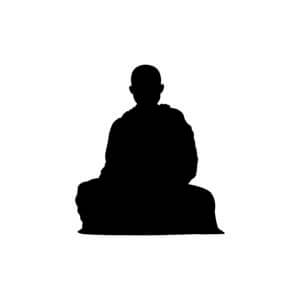
For Dr. Willis, like Thich Nhat Hanh, Buddhism and Christianity, the religion historically associated with black Americans, are not in conflict. “I can use Buddhist methods,” she said, “to practice Baptist ideals.” This sidestepping of an apparent conflict based on dualistic thinking is made possible because the Dharma—or teachings—is wisdom not monopolized by the cultures of the Far East. For a Buddhist, this approach of “both/and” as opposed to “either/or” is made possible by the condition of dependent origination, Pratītyasamutpāda, which describes all conditioned phenomena as arising from a concatenation of causes, and this makes all phenomena interdependent and interconnected. Thich Nhat Hanh, who has an image of Jesus in his place of meditation, refers to this ontology as “interbeing.” So aspects of the Dharma are as easily discovered in Western and black American culture as they are in Eastern ones, in Christianity as well as Islam, because the Buddhist experience is the human experience.
If one looks closely one can see some of its elements in the Meditations of Marcus Aurelius; in the Rhineland sermons of Meister Eckhart; in Hume’s critique of the self in A Treatise of Human Nature; in George Washington’s advice on how best to select one’s friends (which echoes the advice offered in the Rhinoceros Sutra); and in the aphorisms the writer Jean Toomer published in his book Essentials and in his 1937 poem “Blue Meridian.” In other words, we only call ourselves “Buddhists” for the sake of convenience in a world attached to labels. Some practitioners simply say they are “students of the Dharma.” Others do not identify or label themselves at all.
WE ONLY CALL OURSELVES “BUDDHISTS” FOR THE SAKE OF CONVENIENCE IN A WORLD ATTACHED TO LABELS... SO ASPECTS OF THE DHARMA ARE AS EASILY DISCOVERED IN WESTERN AND BLACK AMERICAN CULTURE AS THEY ARE IN EASTERN ONES, IN CHRISTIANITY AS WELL AS ISLAM, BECAUSE THE BUDDHIST EXPERIENCE IS THE HUMAN EXPERIENCE.
Jan Willis, Lama Rangdröl, Mumford, Walker, the Zen teacher Angel Kyodo Williams, and the approximately fifteen thousand black practitioners of Soka Gakkai (Nichiren) Buddhism, who chant chapters of the Lotus Sutra, belong to the first black generation in America to recognize the relevance of the Dharma for the specific historical and existential forms of suffering that are the residue of slavery and racial segregation in a very Eurocentric country; and they believe this practice may satisfy John Lewis’s call for “a revolution of values . . . of ideas in the black community,” a revolution that encourages nonviolence as “a way of life.” Like their black predecessors, the law of their lives—their historical inheritance—is the quest for liberation. They wish to be free. Truly free. This first-wave, new generation of black American Buddhists includes in its ranks politicians like Georgia Congressman Hank Johnson, a member of Soka Gakkai International; entertainers such as Tina Turner; and the jazz great Herbie Hancock, who in a 2007 interview for Beliefnet said,
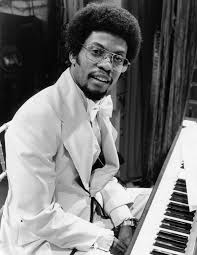 The idea of cause and effect, which is what Namu Myōhō Renge Kyō is about, made sense to me. I’m a guy that’s always been attracted to science—and cause and effect is what science is about. . . . The cool thing is that jazz is really a wonderful example of the great characteristics of Buddhism and the great characteristics of the human spirit. Because in jazz we share, we listen to each other, we respect each other, we are creating in the moment. At our best we’re nonjudgmental. If we let judgment get in the way of improvising, it always screws us up. So we take whatever happens and try to make it work. . . . At the same time—and just think about this—within the life of a human being is the universe. So, we all have the universe inside at our core.
The idea of cause and effect, which is what Namu Myōhō Renge Kyō is about, made sense to me. I’m a guy that’s always been attracted to science—and cause and effect is what science is about. . . . The cool thing is that jazz is really a wonderful example of the great characteristics of Buddhism and the great characteristics of the human spirit. Because in jazz we share, we listen to each other, we respect each other, we are creating in the moment. At our best we’re nonjudgmental. If we let judgment get in the way of improvising, it always screws us up. So we take whatever happens and try to make it work. . . . At the same time—and just think about this—within the life of a human being is the universe. So, we all have the universe inside at our core.
Clearly, Mr. Hancock does not have an image of himself based on his being in any way “inferior” or a “victim.” Those conceptualizations can poison the mind and the human spirit. He is not mired in a past that cannot be recovered or a future that will never come, but instead works to anchor himself “in the moment.” Like Lama Rangdröl, he is not ensnared in the debilitating, bitter, polarizing, clichéd “mentality of an angry black man.” And Hancock’s comparison of his egoless listening and nonjudgmental approach as a jazz musician to the Dharma reminds us that Buddhist practice has much in common with the process we associate with creating art, which demands openness to all phenomena.
Creating a “Beloved Community”
The black American practitioners I’ve presented, all representing different branches (or traditions) of the bodhi tree, have seen in Buddhist practice the most revolutionary and civilized of possible human choices, one that extends King’s dream of the “beloved community,” especially in terms of the Dharma’s emphasis on addressing the “second front” Dr. King told us we must not neglect.
One thing that is essential for this spiritual revolution is ahimsa, doing no harm to other sentient beings and ourselves. You need only to pick up today’s newspaper to see that the world in which we live, and our enveloping culture, is saturated through and through with violence, all manner and degrees of violence in our dualistic ways of thinking, our actions, our speech, and even in our forms of popular entertainment. And this has been so for a very long time. I mentioned slavery and segregation, two social arrangements that could only be maintained through systematic, institutional violence. But I could also mention the political violence in our time, from the assassinations of King, Malcolm X, both Kennedys, and so many others in the 1960s to the recent shooting of Rep. Gabrielle Giffords and killing of six others, including a nine-year-old girl, in Arizona. Historically, we are a violent nation. And it is violence and anger more than anything else that we must “let go.” But we need clear, practical guidelines to do that.
In the Buddhist world, the Ten Precepts are commonly found among many traditions. They are taken by laity and monks alike, and I took them in the Soto Zen school with the mendicant monk and peace activist Claude AnShin Thomas. The first ten vows are as follows:
- Do not kill.
- Do not steal.
- Do not engage in improper sexual conduct.
- Do not lie.
- Do not indulge in intoxicating substances.
- Do not speak of others’ errors and faults.
- Do not elevate self and blame others.
- Do not be withholding, but instead generous.
- Do not give way to anger.
- Do not defame the Buddha, the Dharma, or the Sangha.
Whenever I describe these precepts to friends in the academic and art worlds, many of them balk and say, “I can’t do that” when they hear number 5 (“Do not indulge in intoxicating substances”), numbers 6 and 7 (“Do not speak of others’ errors and faults,” and “Do not elevate self and blame others”), and especially number 9 (“Do not give way to anger”). In their honesty, they admit that being nonjudgmental, as Hancock said of his practice, is extremely difficult in our society—a society that so often portrays the angry person as a powerful person, and finding fault as a proper intellectual activity that demonstrates our critical acumen, shows our intellectual superiority and, by virtue of that, feeds our egos. In this culture, then, it is difficult to let go of pride (maana), and anger, which is a form of violence and one of the three defilements, along with greed and ignorance, though Saddhatissa points out in Buddhist Ethics, “By allowing anger to arise I am like one who wants to hit another and picks up a burning ember or excrement and by so doing either burn or soil myself.” Although simple and straightforward (and, of course, demanding), the precepts embody the spirit of the Four Noble Truths, the Eightfold Path, the paramitas, and in them we can see the distillation of Buddhist metaphysics.
ADMIT THAT BEING NONJUDGMENTAL... IS EXTREMELY DIFFICULT IN OUR SOCIETY—A SOCIETY THAT SO OFTEN PORTRAYS THE ANGRY PERSON AS A POWERFUL PERSON, AND FINDING FAULT AS A PROPER INTELLECTUAL ACTIVITY THAT DEMONSTRATES OUR CRITICAL ACUMEN, SHOWS OUR INTELLECTUAL SUPERIORITY AND, BY VIRTUE OF THAT, FEEDS OUR EGOS.
The faintest experience of Nirvana or sunyata—the emptiness at the heart of all things—extinguishes like a candle’s flame the craving and thirst (trishna) described in the First and Second Noble Truths. For Mumford, who said his “ass was on fire,” this extinction of craving allowed him to tame Vivekananda’s conditioned and erratic “monkey mind,” and to understand through mindfulness the operations of his own consciousness—how we perpetually see through the veil of our ideas or Samsara, which Mumford called “fantasy.” Black American Buddhists understand that the reality we experience is our creation, and how we respond to it is our personal responsibility. They are as politically sophisticated, aware of the history of oppression, and concerned with social justice as their predecessors. But they have located a “middle way” between withdrawal from social life, on the one hand, and surrendering to the egoistic pursuit of things cheap, banal, and self-centered, the vulgar hedonism and desire for ephemeral baubles promoted 24/7 by capitalism and America’s adolescent youth culture. As Geshe Wangyal might put it, they live in “detachment without denial; involvement without indulgence.”
Why Is Buddhism Attractive?
In order to appreciate why the theologian Paul Tillich once called Buddhism “one of the greatest, strangest, and at the same time most competitive of the religions proper,” and why it is attractive to black Americans in the post–civil rights era, we must see that Buddhism neither accepts nor rejects the idea of God. Why? First, because one’s happiness and salvation, awakening and liberation from suffering, rests entirely in one’s own hands (i.e., the karmic cause and effect relationship that so impressed Herbie Hancock). Second, the understanding of anicca, or impermanence, contained in the Buddha’s observation that “whatever is subject to arising must also be subject to ceasing,” is the ontological starting point for Buddhist reflection on all things. This begins with the experience of emptiness or the lack of an enduring, separate, immutable, and unchanging essence or substance in everything. That realization, which was systematically expounded by the Buddhist philosopher Nagarjuna, leads naturally to the perception of dependent origination. In this vision, the “self” we struggle so hard and long to bolster and sustain is discovered to be a construct at best. Static (racial) identity is an illusion. We are constant change, reborn moment by moment. We have no nature, no essence, no self, no substance as our identity—and no relation whatsoever to the evil, racist iconography that caricatures black people in popular culture and the national consciousness. It is that kind of essentialism that gives rise to attractions and revulsions, our attachments and clinging, and to prejudices that lead to dukkha. In his article “No Religion,” Buddhadasa Bhikkhu presents a provocative interpretation of the meaning of birth, death, and being reborn. “For example,” he says,
think like a criminal and one is instantly born as a criminal. A few moments later those thoughts disappear, one thinks like a normal human being again and is born as a human being. If a few moments later one has foolish thoughts, right then one is born as a fool. . . . Thus, in a single day one can be born any number of times in many different forms, since a birth takes place each and every time there arises any form of attachment to the idea of being something. Each conception of “I am,” “I was,” or “I will” is simultaneously a birth.
Something also attractive to black American practitioners is the fact that in its proto-empiricism and with its flavor of phenomenology, early Buddhism rejects any reliance on apta vacana (received opinion) or appeals to an authority. As the Buddha says in the Kālāma Sūtra,
Do not go by oral tradition, by lineage of teaching, by hearsay, by a collection of scriptures, by logical reasoning, by inferential reasoning, by reflection on reason, by the acceptance of a view after pondering it, by the seeming competence of a speaker, or because you think, “The ascetic is our teacher.” But when you know for yourselves, “These things are unwholesome, these things are blamable; these things are censured by the wise; these things, if undertaken and practiced, lead to harm and suffering,” then you should abandon them.
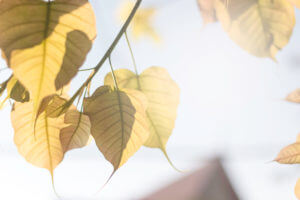
The Buddha also taught:
Look within!
You are the Light itself.
Rely on yourself.
Do not rely on others.
The Dharma is the Light.
Rely on the Dharma.
Do not rely on anything,
Other than the Dharma.
We can take the first small steps toward this inward revolution called for by the Dalai Lama, and the cultural revolution in black communities called for by Congressman Lewis, by mindfully changing the way we talk to each other—precepts numbers 6 and 7—by eliminating the unwholesome violence and disrespect in our speech. I would like to suggest a simple test for whatever you want to say before you say it. Think of this test as being three questions—or three doors—your speech must pass through before you make it public. The first door is, Is it true? The second door is, Is it necessary? And the third door is, Will it cause no harm?
The goal of the Buddhadharma is to extinguish the war within, and to help Americans black and white realize complete liberation—even from the concepts of the Dharma, if they cause us to be attached or to cling to that which is impermanent and unsatisfactory. More radical than any other “religion,” it also makes clear that when Buddhist ideas such as the Four Noble Truths, the Eightfold Path, the practices and paramitas have served their purpose, these are ethical guidelines that we will eventually “let go,” like the proverbial raft that carries us safely across the sea of Samsara, for once we reach the other shore, it is no longer necessary to carry even that vehicle on land. Ironically, and like no other religion or philosophy, the Dharma enables us to free ourselves even from



